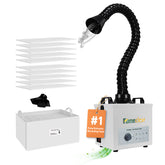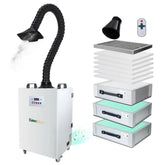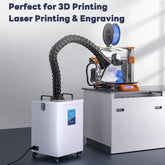Optimizing Surgical Plume Extraction: Enhancing Safety and Efficiency in Operating Rooms
In the realm of modern surgical procedures, the importance of surgical plume extraction cannot be overstated. This comprehensive guide delves into the intricacies, benefits, and best practices associated with surgical plume extraction, offering valuable insights for healthcare professionals and facilities striving to maintain a safe and healthy operating environment.
Understanding Surgical Plume
What is Surgical Plume?
Surgical plume, also known as surgical smoke or aerosolized debris, refers to the airborne particles and gases generated during surgical procedures, particularly those involving energy-based devices such as lasers, electrosurgical units, and ultrasonic scalpels. The plume contains a complex mixture of cellular debris, water vapor, chemicals, and potentially hazardous substances, posing health risks to both patients and surgical staff if not effectively managed.
Composition of Surgical Plume
The composition of surgical plume varies depending on the type of surgical procedure and energy source used. Common constituents include carbon dioxide, water vapor, particulate matter, and volatile organic compounds (VOCs). Additionally, the plume may contain biological contaminants such as bacteria, viruses, and cellular debris, presenting a potential source of infection transmission in the operating room environment.
Importance of Surgical Plume Extraction
Safeguarding Occupational Health
Effective surgical plume extraction is essential for safeguarding the health and well-being of surgical personnel. Prolonged exposure to surgical plume can lead to respiratory irritation, allergic reactions, and long-term health effects. By implementing robust extraction systems, healthcare facilities can minimize the risk of occupational hazards and create a safer working environment for all staff members.
Enhancing Surgical Precision and Visibility
Proper management of surgical plume contributes to enhanced surgical precision and visibility during procedures. Excessive smoke and debris can obstruct the surgeon's view, impeding their ability to perform intricate maneuvers and procedures accurately. By removing plume from the surgical field, extraction systems enable clearer visualization, improving surgical outcomes and reducing the risk of intraoperative complications.
Preventing Environmental Contamination
In addition to protecting surgical staff, surgical plume extraction helps prevent contamination of the operating room environment. The presence of airborne particles and contaminants can compromise the sterility of surgical instruments and surfaces, increasing the risk of surgical site infections and post-operative complications. By effectively extracting plume, healthcare providers can maintain a clean and sterile surgical environment, ensuring optimal patient safety and outcomes.
Strategies for Effective Surgical Plume Extraction
Utilization of High-Efficiency Smoke Evacuators
High-efficiency smoke evacuators are essential components of effective surgical plume extraction systems. These specialized devices utilize powerful suction mechanisms and advanced filtration technology to capture and remove surgical plume from the operating room environment. By selecting smoke evacuators with high airflow rates and efficient filtration systems, healthcare facilities can effectively mitigate the health risks associated with surgical plume exposure.
Positioning of Smoke Evacuation Devices
Proper positioning of smoke evacuation devices is crucial for maximizing extraction efficiency. Devices should be strategically placed near the surgical site to capture plume directly at the source. Additionally, the orientation and placement of suction ports should be optimized to ensure thorough extraction and minimal dispersal of contaminants within the operating room.
Regular Maintenance and Inspection
Routine maintenance and inspection of smoke evacuation systems are essential for ensuring optimal performance and safety. Healthcare facilities should establish regular maintenance schedules and inspection protocols to identify and address any issues promptly. This includes cleaning or replacing filters, checking suction tubing for obstructions, and verifying the functionality of suction pumps and airflow regulators.
Conclusion
In conclusion, surgical plume extraction plays a vital role in maintaining a safe and healthy operating environment for both patients and surgical staff. By understanding the risks associated with surgical plume exposure and implementing comprehensive extraction strategies, healthcare facilities can minimize occupational hazards, enhance surgical outcomes, and ensure the highest standards of patient care.






























Leave a comment
Please note, comments need to be approved before they are published.